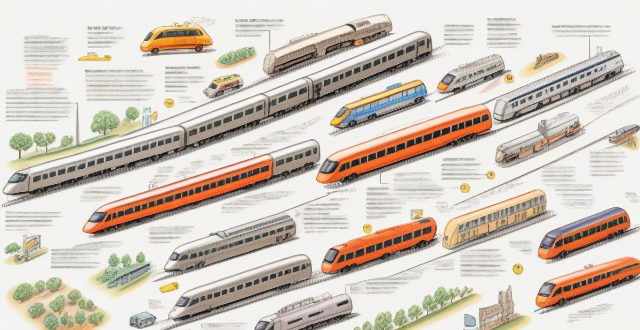Integrated transportation systems reduce traffic congestion by promoting diverse modes of travel like public transit, biking, walking, and carpooling. These systems also improve traffic management through smart controls, congestion pricing, and dedicated high-occupancy vehicle lanes. Land use planning, such as mixed-use developments and compact cities, reduces the need for long-distance travel. Intelligent Transport Systems (ITS) provide real-time information and future advancements like autonomous vehicles could optimize traffic flow. Educational campaigns and Travel Demand Management strategies influence behavior towards efficient transport modes. Infrastructure investments in improved roads and intermodal facilities enhance overall transport efficiency. This multifaceted approach results in a more efficient and flexible transportation network that distributes traffic across various modes, reducing road congestion.

How an Integrated Transportation System Reduces Traffic Congestion
Integrated transportation systems play a crucial role in reducing traffic congestion by promoting efficient and diverse modes of travel. Here's how they contribute to alleviating traffic issues:
Encouraging Multimodal Transport
- Public Transit: An integrated system often includes reliable and frequent public transit options, encouraging people to leave their cars at home. This reduces the number of vehicles on the road.
- Biking and Walking Paths: Safe and convenient paths for biking and walking can divert short trips away from cars, further reducing vehicle numbers.
- Carpooling and Ride-Sharing: Facilitated by technology, carpooling and ride-sharing services are part of an integrated approach, cutting down individual car use.
Improving Traffic Management
- Smart Traffic Controls: Advanced traffic lights and signals that adapt to real-time traffic conditions can prevent bottlenecks.
- Congestion Pricing: Charging higher fees during peak hours discourages non-essential travel, reducing peak hour congestion.
- High-Occupancy Vehicle Lanes: Dedicated lanes for buses, carpools, and bikes can improve flow and encourage more efficient modes of travel.
Influencing Land Use and Planning
- Mixed-Use Developments: By combining residential, commercial, and recreational areas, people can live closer to where they work and play, reducing the need for long-distance travel.
- Compact Cities: Promoting denser urban development reduces distances between destinations, making it easier to walk or bike instead of drive.
Adopting Intelligent Transport Systems (ITS)
- Real-Time Information: Providing travelers with real-time information about routes, delays, and alternatives helps them make informed decisions that can avoid congested areas.
- Automated Vehicles: Although still emerging, autonomous vehicles promise to optimize traffic flow and reduce human error, potentially leading to fewer accidents and smoother traffic.
Educating and Influencing Travel Behavior
- Travel Demand Management: Policies that promote flexible working hours, telecommuting, and virtual meetings can reduce the overall demand for travel during peak times.
- Awareness Campaigns: Educational campaigns can influence people to choose more environmentally friendly and efficient modes of transport.
Implementing Infrastructure Investments
- Improved Infrastructure: Upgrading roads, bridges, and tunnels to accommodate varying types of transportation can improve overall efficiency.
- Intermodal Facilities: Building facilities that easily connect different modes of transport (like parks with transit stations) makes switching between modes seamless and convenient.
In summary, an integrated transportation system tackles traffic congestion from multiple angles, creating a network that is both efficient and flexible. By offering viable alternatives to single-occupancy vehicles and employing smart management strategies, these systems help to distribute traffic more evenly across various modes of transport, resulting in less congestion on roads.